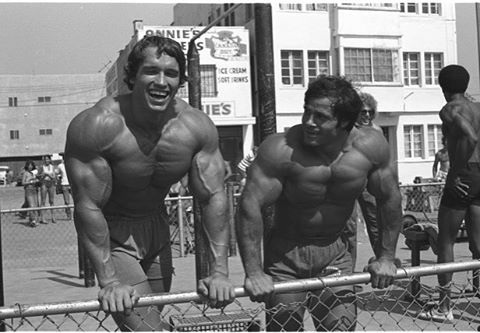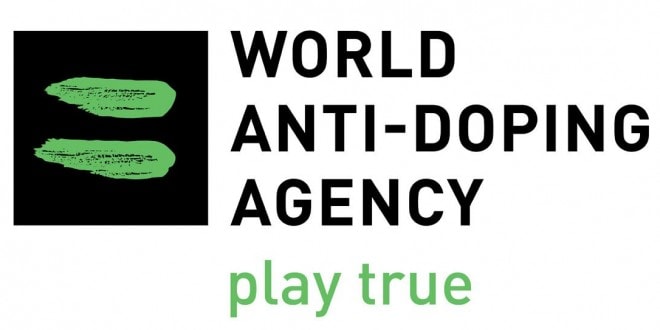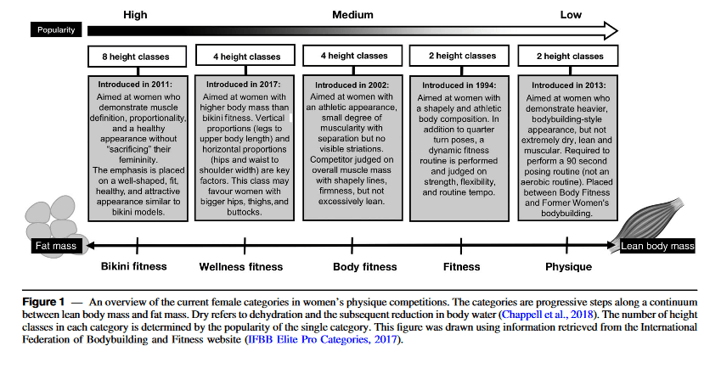Things to consider when searching for appropriate bodybuilding/fitness information
In one of the most famous scence of the classic bodybuilding documentary ‘Pumping Iron’, Arnold Schwarzenegger famously jests that it would not be that difficult to give his friend and rival competitor ‘Franco Columbo’ the ‘Wrong Advices’ to give him a competitive advantage in the run up to the 1977 Mr Olympia Competition. Here at ProPrepCoaching we use our years of competitive bodybuilding experience, academic expertise and practical nuance to provide our athletes with the bespoke and ‘proper advice’ to help them reach their fitness goals. One question I do repeatedly get asked though is where I obtain my fitness information or ‘adivces’ from? If I can impart one piece of advice on you from this short article about gathering information and improving your fitness and bodybuilding knowledge then it would be this: exercising caution and be sure to try things out for yourself.
Identifying the best training and nutritional strategies for bodybuilding, health and fitness goals can be challenging. There is a plethora of information available to the general public on how to get in shape, shed pounds, tone up, and get fit. This website has it’s own fair share and we hope you enjoy the content. When it comes to bodybuilding often people look to those around them, or those who inspire them. I know I did, and it usually starts with the big guy in the gym, or reading training articles from present and pastchampions. The thought process usially goes something like this: it was successful for person X, then it may also be successful for me. It’s not an insensible thought, it’s a good place to start, and “success leaves clues”. At this point though it’s worth exercing caution like I mentioend in the previous paragraph.

Bodybuilders and those operating in the fitness world are not a homogenous group. It’s worth questioning where the information is coming from and who is dishing out advice. When it comes to bodybuilding or figure competitors many use performance and image enhancing drugs (PIED) which if you’ve read my article on steroid use you’ll know makes a massive difference to performance. The problem with this of course is that it makes it makes it difficult to determine optimal preparation and recovery strategies, as well as the effects of on health (Bhasin et al. 1996, Gentil et al. 2017, Viana et al. 2017, de Souza et al. 2018). Put, simply what works for people using PIEDs might not necessarily work for the non-assisted exerciser. You can get away with some pretty poor dietary and training practices and still look great when you supplement vitamin S.
Bodybuilders should also be mindful that ‘natural’ doesn’t necessarily mean World Anti-Doping Agency (WADA) compliant or even ‘drug free’ as bodybuilder and sociologist Dimitrios Liokaftos has researched at length (Liokaftos 2018a, Liokaftos 2018b). There seems to be some fairly loose interpretations of the term natural around the world, some organisations purported to be natural allow the use of prohormonal compounds, have short amnesties on these compounds, or have no drug testing policies whatsoever (The natural muscle association and the ultimate fitness events spring to mind, but to name a few). They are natural in name but not in spirit. That athlete you follow who claims ‘natty’, but do they compete in a reputatable natural bodybuilding organisation. Furthermore, prohormones can have profound effects on an athlete, fat free mass (FMM), while negatively affecting their blood lipids and liver and kidney function (Granados et al. 2013, Joseph & Parr 2015). They exsist in a weird place within the law, not legal, but if presented as food supplements they can often be bought over the counter in supplement shops. Prohormone using athletes are essentially low dose steroid users at he end of the day and just like thouse who use PIEDs, the use of prohormones skews the picture and makes it difficult to establish which methods are likely to work best.

Moreover, there are cultural and geographical difference in practices between British, American, and Australian bodybuilders. There are also differences between professionals and amateur athletes (Chappell et al. 2019 unpub, Hulmi et al. 2017, Mitchell et al. 2018, Tinsley et al. 2018). Conventional practice in one country or amongst amateur competitors can be quite different, and the latest fitness trend coming out of X, which may not necessarily be superior to what’s currently on offer or what your already doing. Which is why look to the best athletes e.g. professionals can be good place; as I said in the introduction success leaves clues. Following a professional can be a bit of a double edged sword. Pros have usually honed their craft from years of training and have built solid foundation based around: mind-set, training principles, and nutritional planning. Diving straight in at the deep end can sometimes be the quickest way to fail! Could you handle Mr Olympia’s training regieme, I know I tried and failed when I first started out.
Furthermore, you should make a distinctions drawn between the different competitors at physique competitions. The psychophysiological changes that occur during competition preparation in the ‘softer’ fitness classes like Bikini and muscle model, compared to ‘harder’ classes like male and female bodybuilding are distinct (Hulmi et al. 2017, Chappell et al. 2018, Alwan et al. 2019). More muscle and less fat is required at the harder end of the scale, compared to the lower end of the scale as highlighted brilliantly by the figure presented below in Alwan et al. (2019). The same can also be said of competition level, what is required to be competitive at local level is quite different to international level where methods may be more extreme. Put simply if you want to be a bodybuilder you need to train like one, and although you can draw inspiration from techniques different classes or sports, the backbone of any programme should remain that of a bodybuilder or your class of choice.

Finally I don’t believe there should be a moratorium on who should be allowed to give out advice, but one of the themes of this article is: is the advice appropriate for your level? Now everyone has something to offer, and we should always be seeking to grow, learn and develop. There does however, come a time when you need to take a step back and say, I’ve moved beyond what person X can teach me and now need to seek out new sources of information. Finally, to get the best advices, tailored to suit your needs as an athlete and ensure you’re on the correct path to success then it might be worth your while seeking out a coach. If it’s bodybuilding, natural bodybuilding, strongman, powerlifting or physique contests in general why not join the ProPrep team and let us guide you on your journey, just follow the link below.
References
Alwan N, Moss SL, Elliot-Sale KJ, Davies IG, Enright K. A Narrative Review on Female Physique Athletes: The Physiological and Psychological Implications of Weight Management Practices. International journal of sport nutrition and exercise metabolism. 2019:1-22.
Bhasin S, Storer TW, Berman N, Callegari C, Clevenger B, Phillips J, Bunnell TJ, Tricker R, Shirazi A, Casaburi R. The effects of supraphysiologic doses of testosterone on muscle size and strength in normal men. N Engl J Med. 1996;335:1-7.
Chappell AJ, Simper T, Barker ME. Nutritional strategies of high level natural bodybuilders during competition preparation. Journal of the International Society of Sports Nutrition. 2018 Dec;15(1):4.
Gentil P, Lira CAB, Paoli A, Santos AB, Silva ADT, Junior JRP, Silva EP, Magosso RF. Nutrition, pharmacological and training strategies adopted by six bodybuilders: case report and critical review. Eur J Transl Myol. 2017;27:51–66.
Granados J, Gillum TL, Christmas KM, Kuennen MR. Prohormone supplement 3β-hydroxy-5α-androst-1-en-17-one enhances resistance training gains but impairs user health. Journal of applied physiology. 2013 Dec 31;116(5):560-9.
Hulmi JJ, Isola V, Suonpää M, Järvinen NJ, Kokkonen M, Wennerström A, Nyman K, Perola M, Ahtiainen JP, Häkkinen K. The effects of intensive weight reduction on body composition and serum hormones in female fitness competitors. Frontiers in physiology. 2017 Jan 10;7:689.
Felix Joseph J, Kristina Parr M. Synthetic androgens as designer supplements. Current neuropharmacology. 2015 Jan 1;13(1):89-100.
Liokaftos D. Natural bodybuilding: An account of its emergence and development as competition sport. International Review for the Sociology of Sport. 2018:1012690217751439.
Liokaftos D. Defining and defending drug-free bodybuilding: A current perspective from organisations and their key figures. International Journal of Drug Policy. 2018 Oct 1;60:47-55.
Mitchell L, Slater G, Hackett D, Johnson N, O’connor H. Physiological implications of preparing for a natural male bodybuilding competition. European journal of sport science. 2018 May 28;18(5):619-29.
de Souza D, Santos J, de Jesus D, Gentil P. Biochemical Profile and Body Composition Alteration of Amateur Bodybuilders during the Pre-Contest Period. J Funct Morphol Kinesiol. 2018;3:26.
Tinsley GM, Trexler ET, Smith-Ryan AE, Paoli A, Graybeal AJ, Campbell BI, Schoenfeld BJ. Changes in Body Composition and Neuromuscular Performance Through Preparation, 2 Competitions, and a Recovery Period in an Experienced Female Physique Athlete. Journal of strength and conditioning research. 2018 Jul.
Viana R, Gentil P, Brasileiro E, Pimentel G, Vancini R, Andrade M, de Lira C. High resistance training volume and low caloric and protein intake are associated with detrimental alterations in body composition of an amateur Bodybuilder using anabolic steroids: a case report. J Funct Morphol Kinesiol. 2017;2:37.
